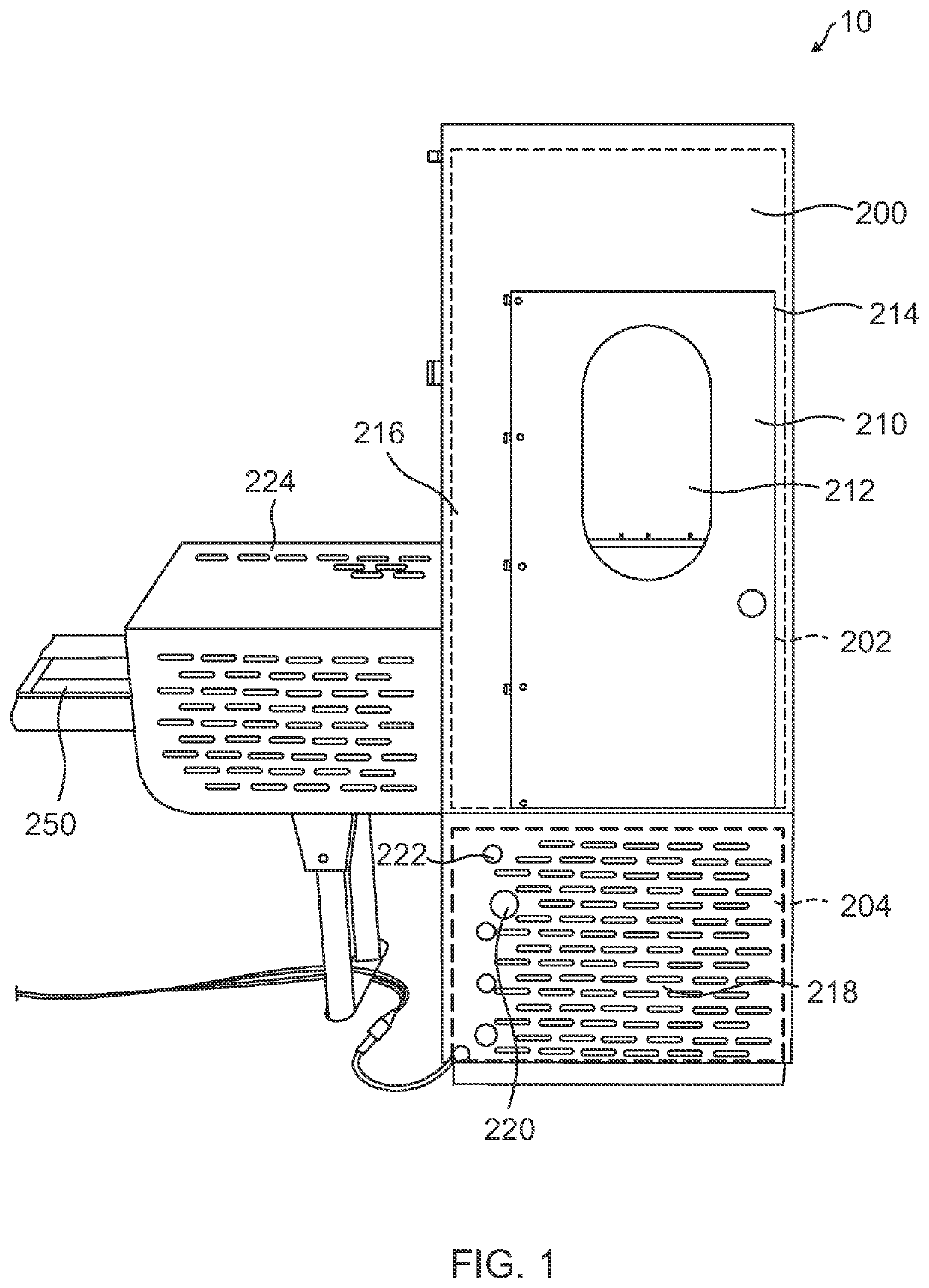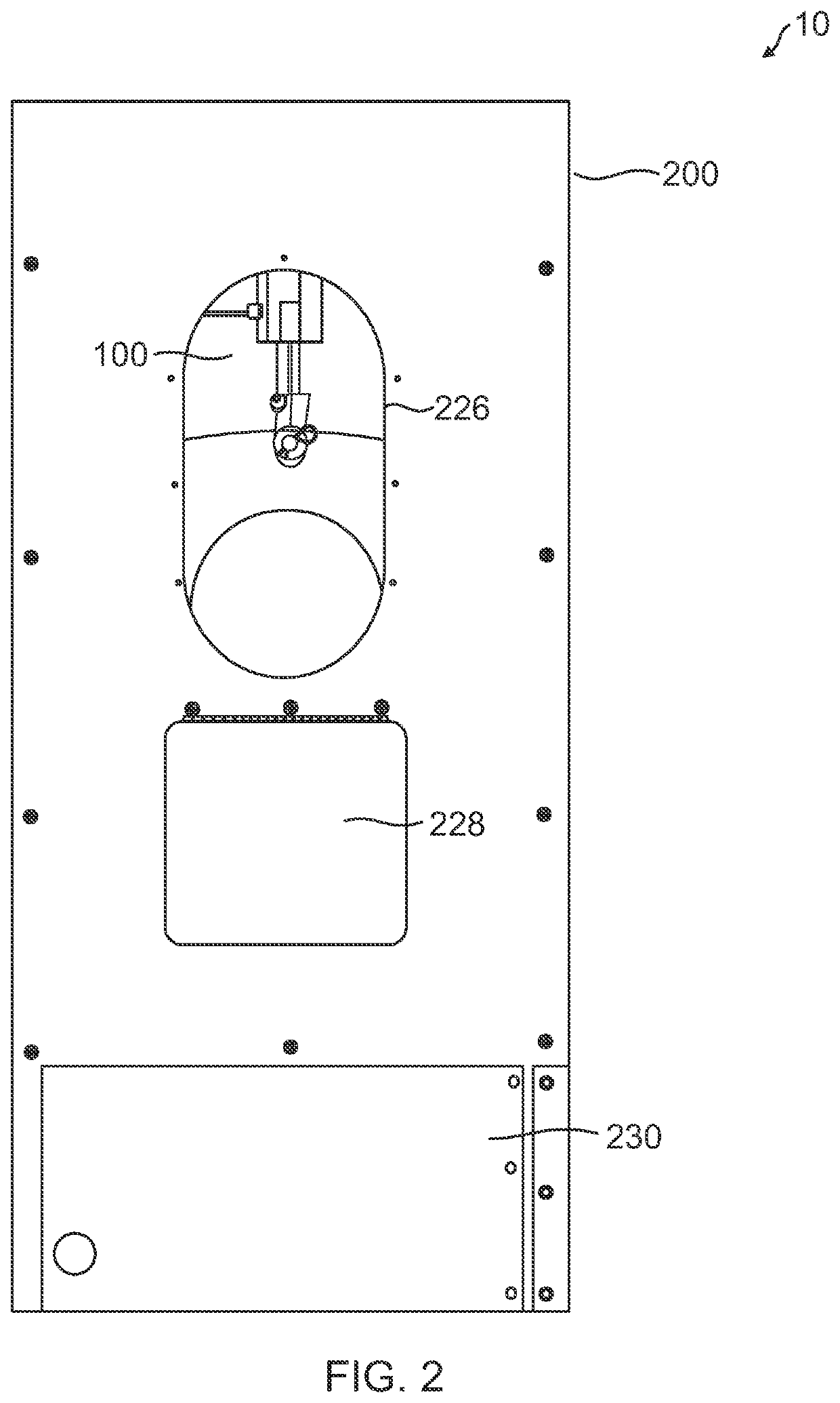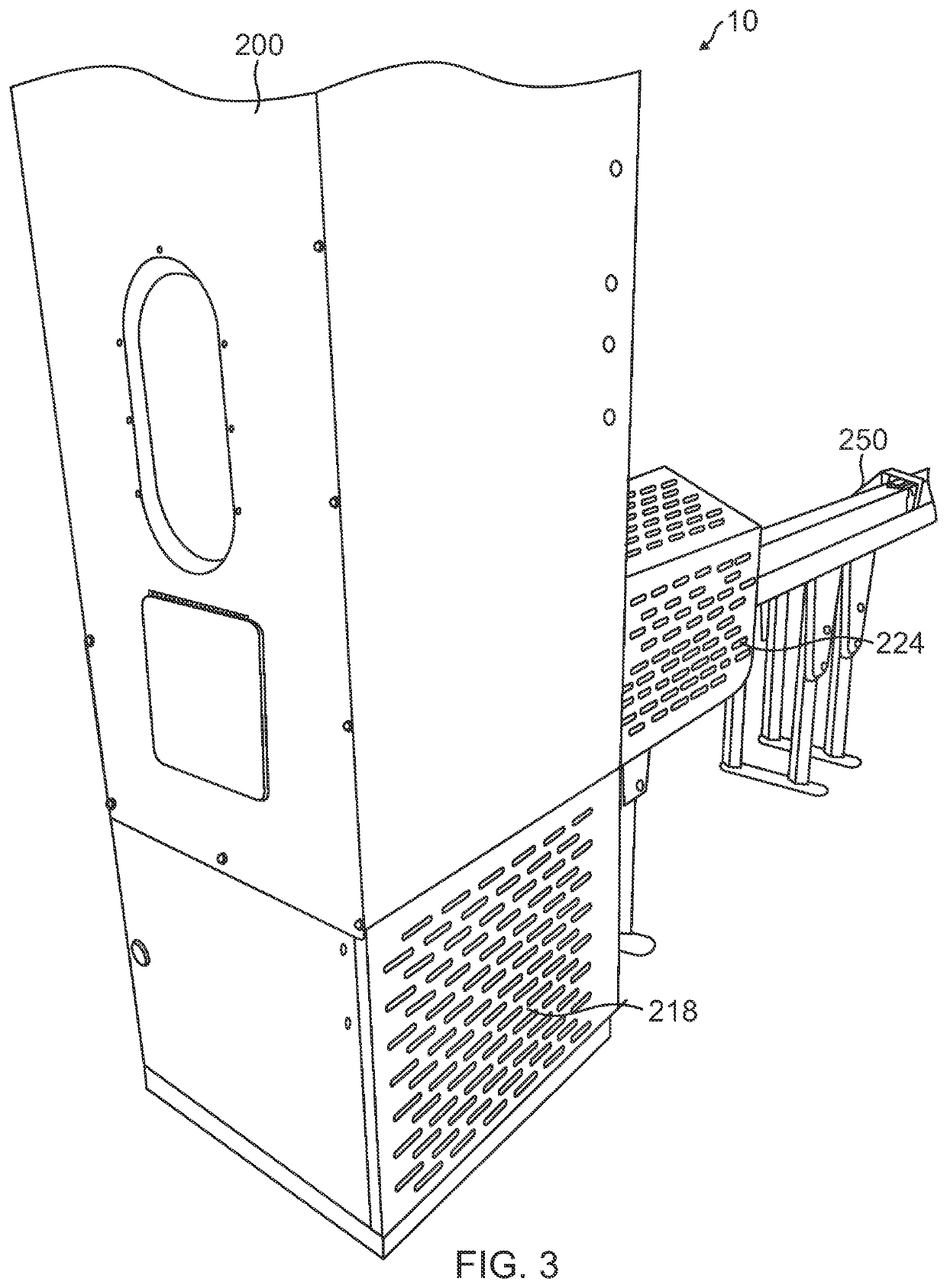Cast Iron Pipe Cutter
a cutting machine and cutter technology, applied in the field of cast iron pipe cutters, can solve the problems of low tensile strength, low ductility, brittleness, etc., and achieve the effects of reducing time, ensuring the ability to create straighter clean cuts, and ensuring the safety of the operator/user
- Summary
- Abstract
- Description
- Claims
- Application Information
AI Technical Summary
Benefits of technology
Problems solved by technology
Method used
Image
Examples
Embodiment Construction
[0039]Referring initially to FIG. 1, a perspective view of a cast iron pipe cutter of the present invention is shown and generally designated 10. The cast iron pipe cutter 10 takes advantage of the physical properties of cast iron to make straight clean cuts quickly and consistently. Generally, the microcrystalline structures of different cast irons include a precipitate of carbon as a flake or spherical nodule surrounded by an iron matrix. The precipitate of carbon, such as graphite or carbide, present in the iron matrix creates localized spots in the cast iron that tend to form fractures. The cast iron pipe cutter 10 applies pressure on the exterior of the cast iron pipe to promote the formation of these fractures. By creating multiple fractures simultaneously at specific locations and forming subsequent fractures sequentially along the exterior of the cast iron pipe, the fractures develop and grow at a controlled rate and in a controlled direction. The multiple fractures amalgama...
PUM
| Property | Measurement | Unit |
|---|---|---|
| diameters | aaaaa | aaaaa |
| diameter | aaaaa | aaaaa |
| diameter | aaaaa | aaaaa |
Abstract
Description
Claims
Application Information
 Login to View More
Login to View More - R&D
- Intellectual Property
- Life Sciences
- Materials
- Tech Scout
- Unparalleled Data Quality
- Higher Quality Content
- 60% Fewer Hallucinations
Browse by: Latest US Patents, China's latest patents, Technical Efficacy Thesaurus, Application Domain, Technology Topic, Popular Technical Reports.
© 2025 PatSnap. All rights reserved.Legal|Privacy policy|Modern Slavery Act Transparency Statement|Sitemap|About US| Contact US: help@patsnap.com



